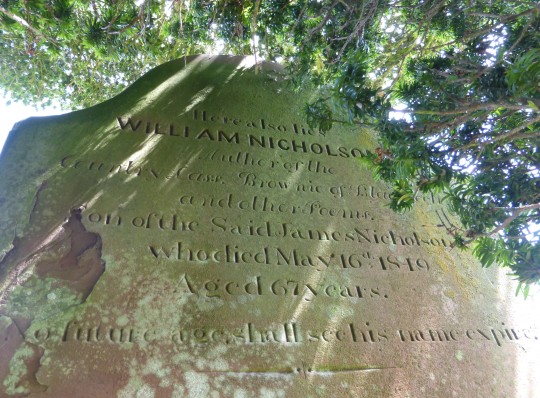#EA hornel
Explore tagged Tumblr posts
Text

The Swans (1899). E.A. Hornel.
8 notes
·
View notes
Text

George Henry & EA Hornel from "An Introduction to Celtic Mythology" by David Bellingham
3 notes
·
View notes
Text
Curious connections

A shared proverb and poet link the two apparently unconnected PLACE in the Biosphere communities of Kirkcowan and Borgue.
In the 1800s both were regarded as remote villages and shared the local saying “out of the world and into Kirkcowan / Borgue” implying both villages were in a world of their own, unaware of what is happening elsewhere. The saying is often repeated today despite better road networks and connections through the world wide web.
Both villages also share a connection with William Nicholson the ‘packman poet’ or ‘bard of Galloway’. Born in the parish of Borgue William was the youngest of eight children. He left school to become a travelling salesman known as chapmen or packman selling portable goods to remote farmsteads throughout Galloway and Ayrshire. Chapmen were welcome visitors, not only for the warea they had to sell but also because they came with news form the outside world (particularly valued if you lived in a remote place) and exchanging entertainment for accommodation. William gained a reputation for his poetry and when he hit on hard times set off to Edinburgh to get his poems printed. Published in 1814 Tales in Verse and Micellaneous Poems, descriptive of rural life and manners was well received. In 1825 William had his poem about Aiken-drum in The Brownie of Blednoch published and inspired the artist EA Hornel’s painting now held at Kelvingrove Museum; https://www.youtube.com/watch?v=t_j-cd6MUa0
Set in a farm near Kirkcowan children of the area would be told of the scary brownie who could leap the waterfall at the Linn of Barhoise. The brownie of Blednoch appears to have been a popular theme for annual parades in the village.
William Nicholson died in Borgue in 1849 and was buried in Kirkandrews churchyard in the parish of Borgue. The headstone is a bit tricky to locate as it is hidden behind a yew tree and the inscription is on the reverse of the memorial the final words saying ‘No future age shall see his name expire’.
Perhaps both Borgue and Kirkcowan can help ensure more is known about the bard of Galloway!
2 notes
·
View notes
Photo

Close Up Series, Pt. 3 - Onto Another Universe
Close up shot of George Henry and EA Hornel - The Druids
#close up#series#art#artist#paint#painting#painter#the glasgow boys#glasgow boys#george henry#EA hornel#the druids#kelvingrove#photography#canon#50mmlens#canon photography#50mm lens#50mm photography#scotla
0 notes
Photo

I'm very rarely stopped by a painterly painting but this on from EA Hornel, 1899 was full of texture and bright shades that were somehow also pastel. It was calming to look at, where usually I find this style chaotic. I much prefer abstract, in fact, I usually wander quickly through galleries without abstract. So this was a pleasant surprise. ••• #kelvingrove #EAHornel #painting #1800s #painterlytexture (at Kelvingrove Art Gallery & Museum)
0 notes
Note
have you posted anything on The Kiss?
Well, technically yes. But I suspect that’s not the one you were thinking of. There have in fact been a number of works by rather famous artists called The Kiss. Edvard Munch painted one, Gustav Klimt painted one, and Auguste Rodin sculpted one. But I suspect you mean the Klimt.

Painted between 1908 and 1909, it’s famous enough that there’s not much left to say about it. I hadn’t remembered the fact until you asked, but I think my grandmother had a poster of it over one of her chairs—and when a painting gets to that point, it’s pretty hard to get a new scholarly toehold into the analysis. I don’t claim that this blog is full of brand-new insight, but I try, at least, not to be boring.
So instead I’ll tell you something kind of tangential.
Klimt often gets credit for reviving the use of gold leaf in paintings, after a six-hundred-year lull. Nearly twenty years earlier, however, in 1890, a pair of Glasgow Boys—George Henry and EA Hornel—used gold in The Druids: Bringing in the Mistletoe.
163 notes
·
View notes
Photo

EA Hornel, Autumn
56 notes
·
View notes
Text

The Coming of Spring (1899). E.A. Hornel.
#ea hornel#art#painting#british art#scottish art#19th century#seen in person#kelvingrove art gallery
16 notes
·
View notes